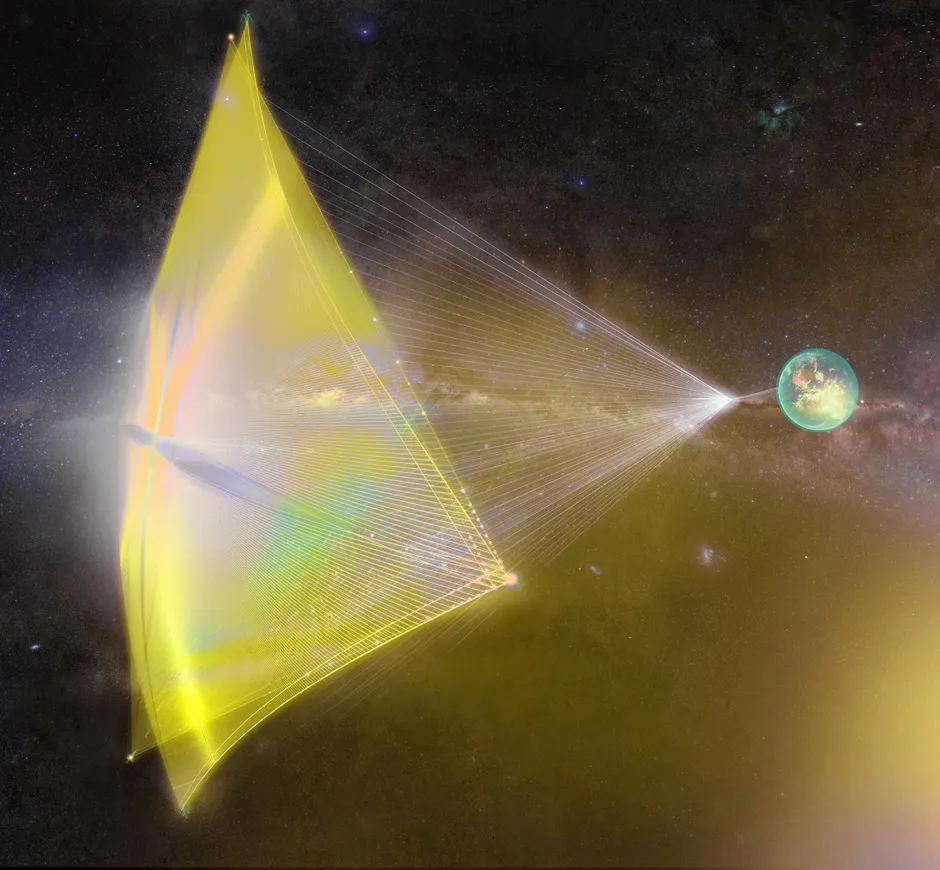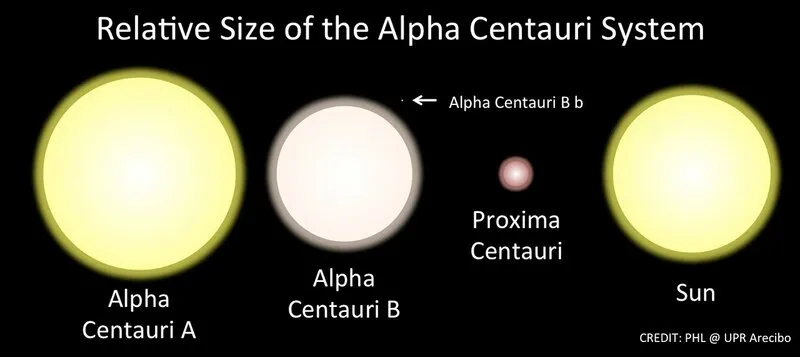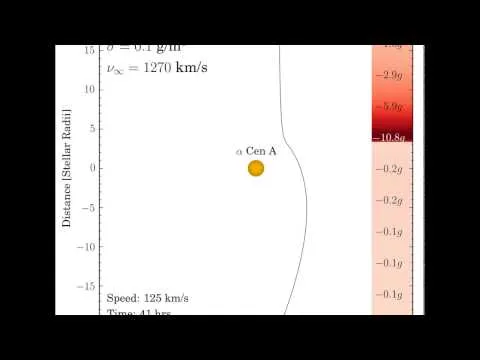One year ago, on April 12, 2016 (that day in 1961, Yuri Gagarin became first man on the Earth orbit) Stephen Hawking and Yuri Milner announced project Breakthrough Starshot. Its goal - developing concept of sending swarm of nanocrafts - tiny probes, equipped with camera and simple sensors, several gramms each, to Alpha Centauri, nearest star to our Sun. Each probe will deploy on the Earth orbit solar sail, which will be accelerated with powerful laser from the surface. Initial plans proposed maximal velocity between 15% and 20% of lightspeed, which gives 20 - 30 years travel time plus 4,2 years to transmit data back to Earth.

Image: Starshot
While for this project only existing technologies are considered, there are still enormous technical problems to solve: List is here
But let's take aside these challenges and suppose that engineers have solved them - swarm of 1000 nanocrafts is already on the way to Alpha Centauri. How to brake them at destination point?
Nanocraft will pass all star system in several hours and go in interstellar space. Of course it'll get some data, but we want more, we waited 30 years!
As we are heavily restricted in weight (several gramms including sail), there is no way to keep fuel on board. All, nanocraft can use for braking - it is star's wind (if we can to change sail's configuration) and its gravitational field.
German astronomers René Heller and Michael Hippke from Max Planck Institute investigated this problem in their new article. They have built computer model of braking in Alpha Centauri system for nanocraft with mass up to 100 gramms and solar sail 100 000 sq. meters. Here are their results.
To brake at Alpha Centauri system using only light and gravitational fields of all its three stars, maximal velocity for nanocraft with above parameters is only 4,6% of light speed, or 13 800 km/s.

For braking, nanocraft have to (1) approach to Alpha Centauri A to the distance of 5 star radii from its surface, it'll allow to decreace velocity from 13 800 to 7800 km/s. Then probe will go to the Alpha Centauri B, this travel will take 4 Earth days, and perform there similar manoeuver. Final velocity will be 1280 km/s.
Then two variants are possible:
1) to direct probe back to Alpha Centauri A and brake it again there, so probe will orbit both stars (around their center of gravity)
2) to direct probe to Proxima Centauri, the dimmest star of triple system, located far from A and B components. It's a lon journey - to get there at speed 1280 km/s, 46 years will needed. But as a bonus, it will allow to get in orbit near to exoplanet, discovered lately in habitable zone. In this case we have total 141 years: 95 years to A+B components and 46 years to Proxima. Add here 4,2 years to transmit data to Earth.
So what is better - to pass star system at hight speed and to get few data in 30 years or to take 141+ year long journey for detail exploration?
Of course there are so many unsolved problems in the project, that sailing in Alpha Centauri system seems to be a bit premature, but authors of this scheme are in contact with Starshot team.

